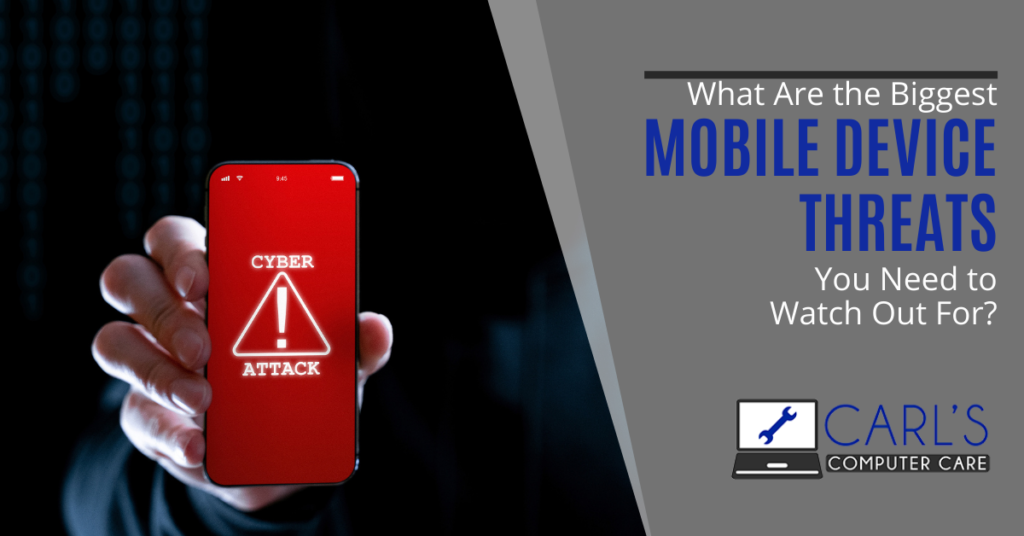
The pandemic ushered in a new era of work – and it seems it is here to stay. These days, almost three-quarters of US workers either work remotely or ‘hybrid’, spending their time both in the office or at home.
However, we need to note that people who work remotely or hybrid don’t necessarily just work from home. Coffee shops, libraries and social clubs are common places where people work. In fact, coffee shop sales increased last year due to more people choosing to work outside of the house – but not in the office.
As employees work in different places, you can be firmly sure that at least one thing will be with them: their mobile phones. Today, a smartphone is like having a supercomputer in your pocket. You can access your work email, Teams, Slack, Salesforce, or any other application.
Smartphones are essential to flexibility, freedom, and productivity for the remote and hybrid workforce.
However, for all the benefits of smartphones, there are also some risks organizations need to know about – especially when it comes to data security.
What Are the Top Smartphone Security Risks?
While the corporate network protects desktop computers, smartphones travel everywhere. They’re exposed to different security threats as they’re taken from place to place.
In order to combat these threats, knowledge is critical. So, here are the top smartphone security risks you need to be aware of.
SMS-ishing
You’ve probably heard of phishing – a form of cyberattack where hackers send fraudulent emails to victims, pretending to be a trusted brand or person. Well, SMS-ishing is the text version.
In SMS-ishing, a cybercriminal will send your employee a text, pretending to be, for example, a technology vendor or healthcare provider. The text will contain a link. When the victim clicks the link, malware will launch onto the device. Alternatively, the victim will be sent to a fraudulent webpage where they’re encouraged to enter sensitive details.
SMS-ishing is big trouble for businesses – and it’s on the rise. According to research, mobile phishing attacks increased by 350% last year.
While it’s very difficult to prevent hackers from getting their hands on your employees’ mobile numbers and messaging them, you can arm your employees with the knowledge to spot these threats rather than fall victim.
To that end, we advise using security awareness training to educate your employees about SMS-ishing and phishing. Alongside this, put in place procedures so your employees know how to report an attack if they receive one.
We understand that creating a security awareness program can be difficult in a small business, as you often have budget and time resources. Get in touch with us if you’d like support. We’ve helped Louisiana businesses like yours with phishing security training.
Malicious Applications
Another way cyber criminals will try to reach your mobile employees is through malicious mobile applications. These applications look just like the real thing. Except, when your employee downloads them, the app will release malware onto their device. This could be ransomware, spyware or even a virus.
As with SMS-ishing, employee training can be helpful here. Ensure that your employees only download applications from reputable app stores. Make sure they also review applications carefully before clicking download.
However, malicious applications are still a risk even with training in place. Because some are incredibly well-designed, it’s impossible to tell that they’re fraudulent.
So, if your people use company-owned smartphones, it’s well worth exploring mobile device management (MDM) solutions. MDM works by putting an agent on company-owned phones.
The agent gives you deep visibility and control over the applications and websites your employees’ access. You can also control data uploads and downloads, which is helpful for data security.
However, while MDM is a good choice for company-owned devices, it’s not a viable option for employee-owned phones as it’s considered too invasive.
Network Spoofing and Man In The Middle Attacks
Network spoofing is a form of attack where a hacker creates a fraudulent WiFI hotspot in a public place, like an airport or cafe. When someone makes an account with a fake WiFi spot, the hacker will steal their credentials. They can then use these for fraud or hack into their other accounts.
While it’s challenging to stop your employees from using public WiFi altogether, you can educate them on network spoofing attacks so they know to remain vigilant. Moreover, it would be best to encourage your employees to sign up for WiFi hotspots with unique passwords every time.
Schedule a Mobile Security Review Today!
Is your mobile security plan adequate to defend you against the newest mobile attack trends? Carl’s Computer Care can review your Louisiana company’s cybersecurity protections and make any needed suggestions to reduce your risk.
Contact us today to schedule a consultation! Call 225-315-3498 or reach us online.
